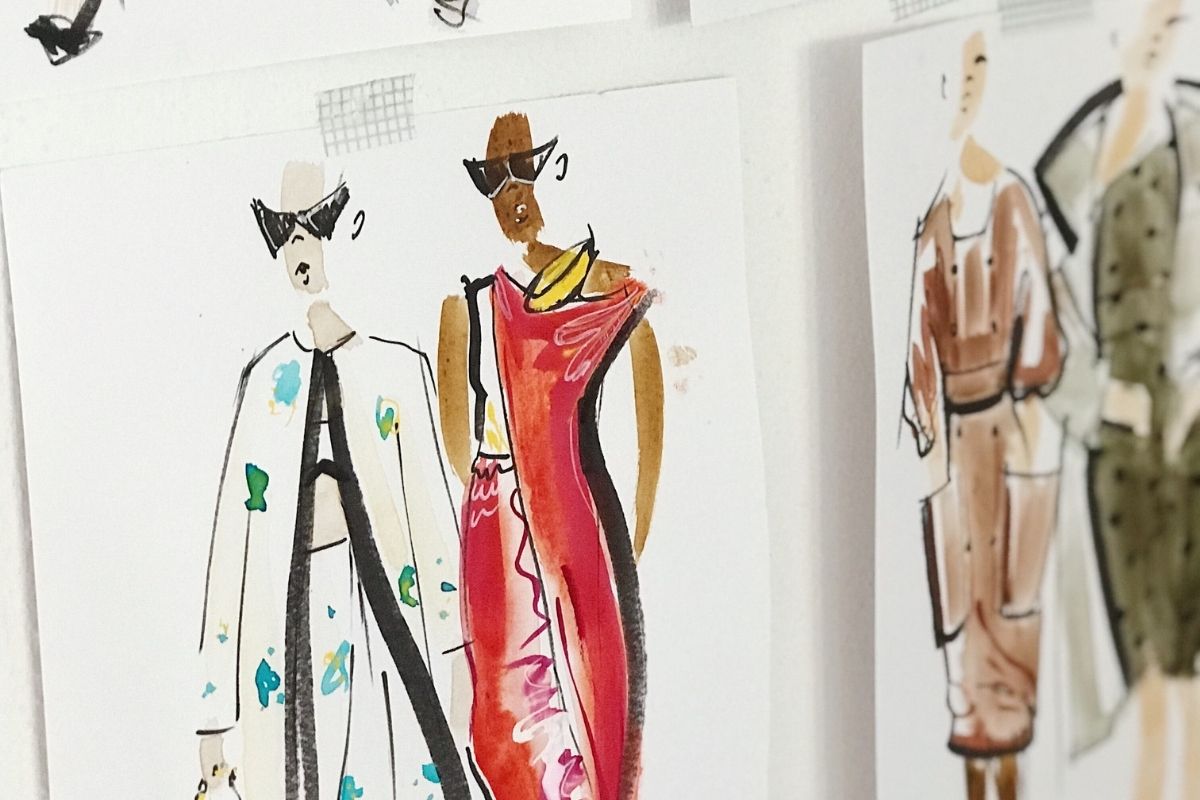Lessons: The White Dress
“We find the white dress at the beginning and end of every century emblematic of the rise of democracy, going back to a classical theme. I love the white dress, in the sense that it’s fresh, it’s new, and it can say a great deal about revival,” Patrick Michael Hugues states.
“Our particular white dress is made of two components—one from the late 1970s and the other from the early 1980s. It’s the stretch lace bodysuit made by American designer Giorgio Di Sant’Angelo. Di Sant’ Angelo began his career as a Lucite jewelry designer until 1968 when the legendary Diana Vreeland discovered his talent. From there, it took off,” Hugues explains.
Hugues continues, “We have a skirt in white cotton muslin made by Geoffrey Beene from his designer clothing line Beene Bag. The white muslin skirt takes us to the beginnings of the white dress and white clothing at the beginning and end of every century. It has a classical mix. It has purity.”
“There are a couple of wonderful details when taking a closer look at our Beene skirt. One of them is a cartridge pleating, which we can trace its origin to the 18th century,” Hugues claims and continues, “the hem has a wonderful trapunto stitch hemline which gives a sense of wadded weight to our muslin skirt.”
Hugues explains further. “The wadded hemline is another fashion we can trace back to the early 19th century, something that we can trace back to the early 19th century. It has a sense of romance. It’s almost the end of the white dress, taking us into the age of romance. The age of romance, of course, referring to the time of Jane Austen’s Sense and Sensibility, Emma, all of those things.”
“While I was making up a story for our white dress, which has a bit of a Gibson Girl look to it, I realized the collar is a high neck with a sense of romance,” Hugues explains. “We place on it, Tibetan beads, glass beads, ceramic beads, a wonderful sort of silver brooch with turquoise stones. and of course, a huge sort of dramatic Marc Jacobs collection sort of raccoon or fox hood to complete the look.”
Hugues claims, “Mixed with this, of course, is also a piece of surplus clothing, or Army and Navy clothing. We find a tremendous amount of Army and Navy clothing after World War II. I believe this is something that the troops will leave behind in Europe, and something that America will export to Europe.”
“This is a time where we’ll see a strong presence of American clothing in Europe. So, this green Army jacket has another level to this wonderful sort of American narrative. When we think about sorts of the white dress, about new dressing—we have a number of narratives to refer to,” Hugues concludes.


